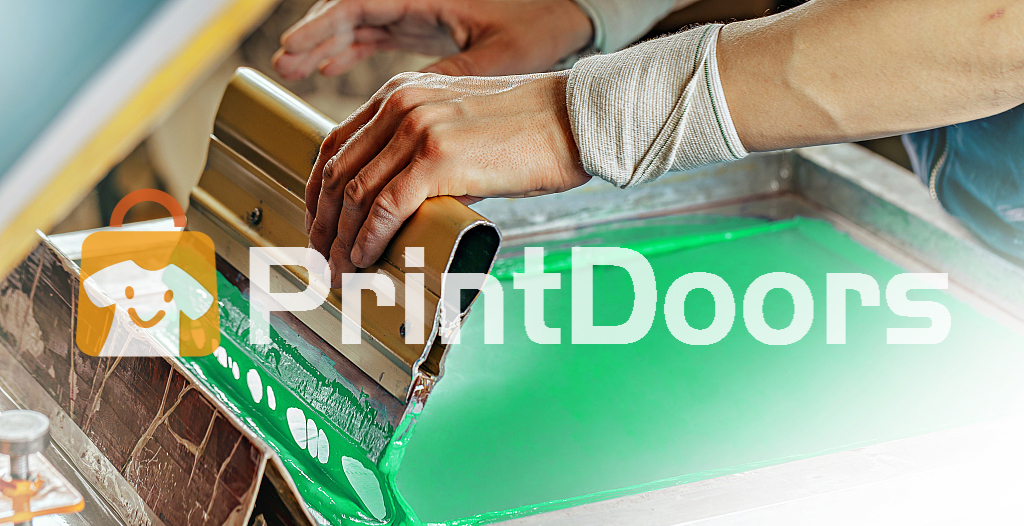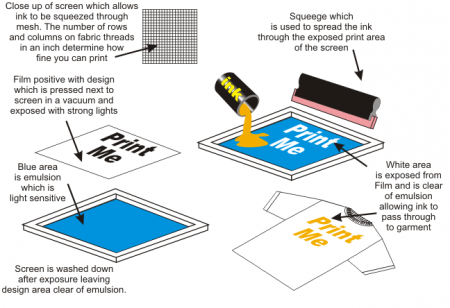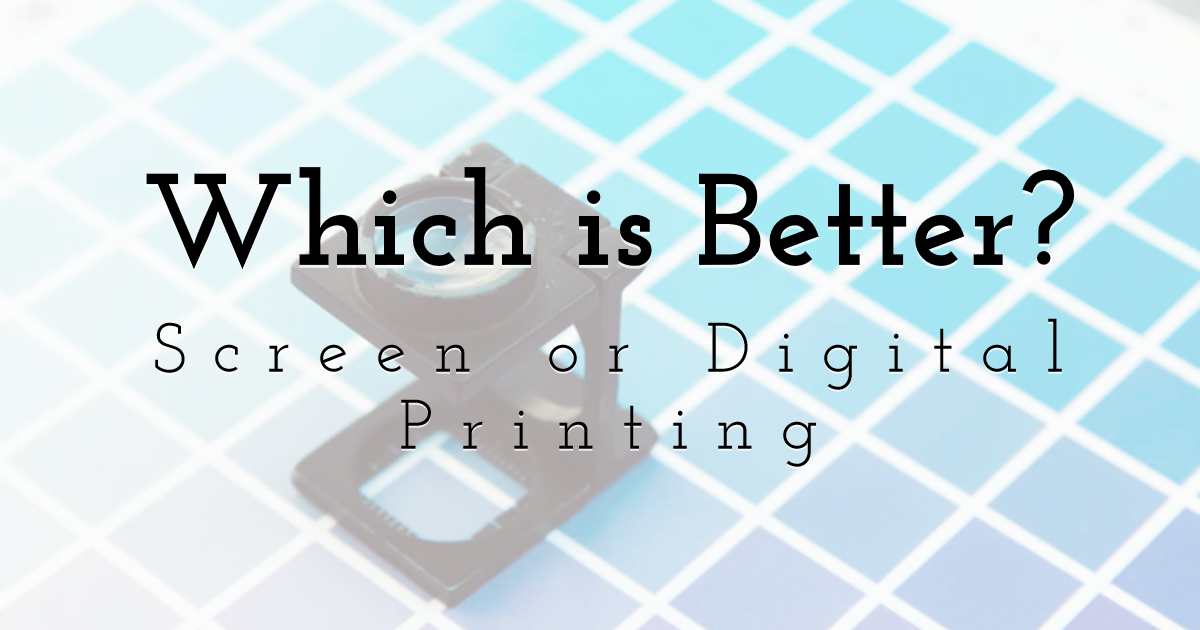Tx Tees - Truths
Tx Tees - Truths
Blog Article
Getting My Tx Tees To Work
Table of ContentsSome Known Factual Statements About Tx Tees The Single Strategy To Use For Tx Tees5 Easy Facts About Tx Tees ExplainedThe 20-Second Trick For Tx TeesOur Tx Tees IdeasUnknown Facts About Tx TeesTx Tees Things To Know Before You Get This
That brings your overall to roughly $1,900 gross and shipping. Build up other costs, like the variety of utilities it requires to run the shop and the cost of ink and solution per style. embroidery shop. Take the print below. This is a one-color photo, so the expense of ink per tee shirt is roughly 20 cents.The solution should only be a couple of cents since you 'd only need to layer one screen for this work. How much should you charge per t shirt to make a revenue? Typically, printers attempt to make up to 45% profit on a print task. Right here's a table to assist you determine that: total cost per item percent of desired profit as a decimal (example:.25 or.45) profit made per item per job Currently allowed's talk concerning the success of DTF.

With DTF, you can publish a handful of t-shirts, or simply one. Both screen printing and DTF have their particular niches in the world.
Tx Tees - Questions
The most effective means to recognize? Ask about and see what print stores like your own are doing. custom cap printing. Attempt both out and see which you like much better
When you're choosing what type of printing technique to utilize for publishing your artwork layouts on your garments, it's important that you know the differences in between these two techniques so you can optimize outcomes while lessening costs. Screen printing is one of the most commonly used strategy for publishing layouts on fabrics.
DTG printing is likewise called spot or direct to garment printing because it publishes only what is required rather than making a screen as screen printers do. https://hearthis.at/txtees02/set/tx-tees/. Display printing functions by screen filler squeegee display printing ink display mesh screen, after that transferring the photo to garment using warm and/or pressure
The DTG printer makes use of unique dye-sublimation inks that are applied into a pre-designed picture by a digital printing system. The inks come to be part of the fabric, permitting dynamic shades and phenomenal detail. It's also understood as place or direct to garment printing since it publishes only what is needed rather than making a screen as display printers do.
How Tx Tees can Save You Time, Stress, and Money.
Initially, it's much quicker - you can publish a fullcolor picture in mins, as opposed to hours for screen printing. Second, there's no established time or costs included - you can print any type of style you like, without needing to produce a display first. Third, there's no waste - since screen printers screen print one design at a time, they need to screen each color individually.
The paper is really expensive and can only be used once. Once it's published on, it needs to be thrown out. - The first acquisition rate is reduced than the in advance investment of DTG printers- You can print multi-color designs one display at once rather of having to publish each shade individually like DTG printing.

Not known Details About Tx Tees
Instead of making use of screen mesh as screen printers do, color sublimation printers make use of laser modern technology to move your images onto garments or paper. A heat process transfers the dye from its solid-state directly into the gas stage which subsequently integrates it onto fabric substratums when they are swiftly heated to heats under high pressure.
Sublimation printing is green. It makes use of much less water than screenprinting, and due to the fact that it doesn't involve making use of harmful solvents, it's risk-free for all kinds of garments. The color sublimation inks are additionally odorless when cured, unlike screen printers that use damaging chemicals during the screen printing process that leave behind an unpleasant smell.
They additionally conserve cash on expensive devices like exposure units because dye sublimation printers don't require a UV direct exposure device or a flash treatment stove that is commonly used in screen printing (custom screen printing). What is direct to garment printing (DTG Printing)? DTG printing is a digital screenprinting process that prints directly onto fabric utilizing specialized inkjet printers
Our Tx Tees Ideas
DTG printing offers several benefits over traditional screenprinting, consisting of the ability to publish photographic top quality pictures, better color vibrancy, and the ability to publish styles on darker materials. DTG printers function by heating the fabric ink up until it becomes a gas. The gas after that permeates the textile, bonding with the fibers to produce a permanent print.

Screen printers simply prepare their display after that start printing till they lack product or ink.- There is a vast array of skilled display printers throughout the globe, which can be valuable for beginners. - It's a slower process - display printers commonly have to wait for the ink to completely dry before they can print the following color- Screen printers call for hands-on labor, so there's a higher learning contour and it takes longer to create a top notch design- Display printing isn't as exact as DTG printing, so you may get some "blood loss" of colors from one part of the picture onto one more if not done appropriately.
Things about Tx Tees
Rather of making use of screen mesh as screen printers do, color sublimation printers use laser innovation to move your images onto garments or paper. A warm procedure moves the dye from its solid-state directly right into the gas stage which in turn merges it onto fabric substrates when they are quickly warmed to heats under high pressure.
Sublimation printing is environmentally friendly. It utilizes much less water than screenprinting, and because it doesn't include making use of damaging solvents, it's secure for all sorts of garments. The dye sublimation inks are likewise odor-free when cured, unlike screen printers that make use of dangerous chemicals throughout the display printing procedure that leave behind an unpleasant odor.
They likewise conserve cash on pricey tools like direct exposure units because dye sublimation printers don't need a UV direct exposure device or a flash treatment stove that is typically used in screen printing. What is straight to garment printing (DTG Printing)? DTG printing is a digital screenprinting process that prints directly onto material utilizing specialized inkjet printers.
The Facts About Tx Tees Uncovered
DTG printing offers many advantages over traditional screenprinting, including the ability to publish photo quality images, higher shade vibrancy, and the ability to publish styles on darker materials. DTG printers work by warming the fabric ink until it becomes a gas. The gas then penetrates the textile, bonding with the fibers to produce a permanent print.
Report this page